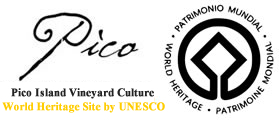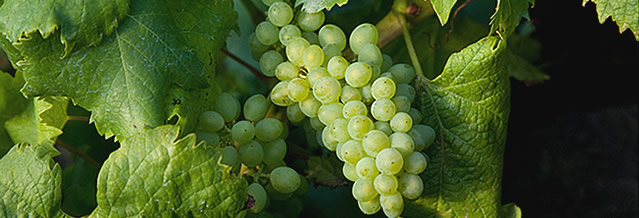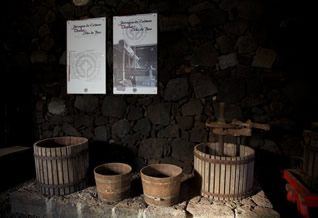Pico Island Vineyard
World Heritage Site by UNESCO on 4 July 2004
The Landscape of the Vineyard Culture of Pico Island was classified as World Heritage Site by UNESCO on 4 July 2004.
This landscape occupies a total area of 154.4 ha in the parishes of Criação Velha and Santa Luzia, being surrounded by a 2445.3 ha buffer zone.
This is the largest and best preserved vineyard area, as the landscape's distinctive features are still very much present here.
The people from Pico were able to wisely, skilfully and creatively triumph before the challenges of nature by turning stones into such a treat that even got to the table of popes and Russian Tsars.
Vineyards were planted and protected from the strong winds coming from the ocean through a perfectly structured tracery of giant walls, from which the rectangular plots, called currais, stand out.
The height of these stone shelters is a compromise between the fact that they should protect vineyards from the wind and salt spray and the fact that they should simultaneously expose the grapevines to as much sun rays as possible.
Alongside with the vineyard culture, several buildings have been built: manor houses, wine cellars, warehouses, tide wells, small ports for shipping barrels, small convents and chapels, reflecting the everyday life of a hard-working, winegrower people.
However, these human interventions have not altered the natural landscape.
"since it all emerged from the lava stone, the same lava stone, just working the stone. Stone it was and stone it remained"
Tomaz Duarte Jr, 2001.

© Carlos Silva

